Have you just welcomed an adorable Corgi puppy into your family? This special time filled with love and fun is also the best time to learn about your new canine companion. We want you to have the tools needed to better understand your growing Corgi. Below, we discuss everything you need to know about Corgi progression, including month-to-month growth, diet tips, and training tips!
Let’s get started.
Brief History of the Corgi Breed

The Corgi is believed to have been brought to Wales by Vikings in the 9th and 10th centuries.
©iStock.com/Karyna Demianiuk
Did you know that the Corgi holds a special place in Welsh folklore? Legend has it that two Welsh children were playing in a field when they discovered two adorable puppies. The children initially assumed they were foxes, but they noticed that these pups had unique markings.
The children took the special puppies home to show their family. Their parents revealed a magical surprise! The puppies were a special gift left in the field by fairies, who used them to pull their magical carriages. The parents pointed to the white markings on the Corgi’s shoulders as proof. These markings were left over from their magical fairy saddles.
While the folklore surrounding their origination is a crowd favorite, these pups are actually believed to be descendants of Swedish cattle dogs that were brought to Wales by ancient Vikings. These pups were known to be incredible farm dogs. They quickly won the hearts of cattle ranchers in the area. The breed soon spread throughout Europe. Their popularity skyrocketed when Queen Elizabeth II of England was gifted her first Corgi puppy in 1933.
Pembroke Welsh Corgi vs. Cardigan Welsh Corgi
Before we dive in, let’s first breakdown the differences between the Pembroke Welsh Corgi and the Cardigan Welsh Corgi. The two breeds were lumped together initially, but they are now recognized as two separate breeds.
Here are a few of their differences:
- Cardigan Welsh Corgis have long tails, while Pembroke Welsh Corgis have docked tails.
- Cardigan Welsh Corgis are slightly larger than Pembroke Welsh Corgis.
- Cardigan Welsh Corgis are a bit curvier, while Pembroke Welsh Corgis have a squarer build.
- The only recognized coat colors for the Pembroke Welsh Corgi are red, sable, and tricolor. The colors are more varied for the Cardigan Welsh Corgi.
The differences between the Cardigan Welsh Corgi and the Pembroke Welsh Corgi are mostly physical. These pups are known to have almost identical personalities. Some say the Cardigan is a bit more laid back than the Pembroke, but this isn’t an official trait.
Corgi: Growth and Weight Chart by Age
The Cardigan and Pembroke Welsh Corgi do have a slight size difference. We break down the growth chart for each Corgi below.
| Age | Cardigan Welsh Corgi | Pembroke Welsh Corgi |
| Birth | 1-2 pounds | 1-2 pounds |
| 1 Month | 4-6 pounds | 4-6 pounds |
| 6 Weeks | 6-8 pounds | 5-7 pounds |
| 2 Months | 8-11 pounds | 7-10 pounds |
| 3 Months | 11-14 pounds | 10-13 pounds |
| 4 Months | 14-17 pounds | 13-16 pounds |
| 5 Months | 17-21 pounds | 16-20 pounds |
| 6 Months | 21-24 pounds | 20-23 pounds |
| 7 Months | 22-25 pounds | 21-24 pounds |
| 8 Months | 25-28 pounds | 24-26 pounds |
| 9 Months | 26-30 pounds | 25-27 pounds |
| 10 Months | 28-32 pounds | 26-28 pounds |
| 11 Months | 31-35 pounds | 27-29 pounds |
| 12 Months | 34-37 pounds | 28-30 pounds |
| 2 Years | 34-38 pounds | 28-31 pounds |
When Will My Corgi Stop Growing & How Big Will He Get?
The Corgi is a small to medium sized dog. They will reach their mature adult height around 12 months of age, and their ultimate weight around 16 months. Most Corgis stand at about 10 to 12 inches at the shoulder. They will typically weigh anywhere from 25-38 pounds. Your adult Corgi may fill out a few centimeters around the chest and abdomen until the age of two years.
To have a more accurate idea of how big your adult Corgi will be, checkout your Corgi’s parents in person. Their parent’s size is the best indicator of how big your little one will be at adulthood.
When Should My Corgi Stop Eating Puppy Food?

Corgi puppies will start to lose their teeth when they are three months old.
©Vera Reva/Shutterstock.com
Puppy food is packed with nutrients that help your Corgi puppy grow into a healthy adult! Puppy food contains extra calories that keep up with energy needs, increased calcium for optimal bone growth, and added vitamins that support healthy brain development.
You should always feed your Corgi a diet created for puppies until they have reached their adult size. We suggest feeding puppy food until 12 months old, and then slowly transitioning over to an adult kibble made for small to medium sized dogs. Switching the diet over a two-week period is ideal.
When Will My Corgi Start Losing Their Puppy Teeth?
If you are now the proud parent of a Corgi puppy, then you may find the occasional puppy tooth around your home! Your Corgi puppy should have a mouth full of tiny puppy teeth by six weeks old. However, these puppy teeth won’t stick around for long.
Most Corgi puppies will start to lose their puppy teeth at three months old. Permanent teeth will grow in, causing baby teeth to fall out one by one over a three to four-month period. Your Corgi puppy should have a full set of permanent teeth by six to seven months old.
When Should I Start Training My Corgi?
The Corgi was originally bred to herd livestock, so they are prone to pushy behaviors like ankle biting and nipping. The Corgi is also known to be highly energetic and spunky, so each of these traits make it essential to offer your Corgi a well-rounded training plan from the moment they enter your home.
Thankfully for the new Corgi parent, this breed is considered to be highly intelligent. This means they often catch on to the concepts of basic obedience training with ease, and they are receptive to obedience training from the time they are eight weeks old.
What Commands Should I Teach My Corgi First?
Now that you are ready to dive into obedience training, you need to know which commands to start with first. Let’s break down the cues that are essential for growing Corgis to learn.
- Sit
- Stay
- Lay down
- Come
- Drop it
In addition to the commands we listed above, it is also essential to leash train your Corgi as early on as possible. Corgis are known to ankle bite in an effort to ‘herd’ their owners, so teaching them how to walk properly on a leash is essential. If you leash train them from puppyhood, then they are less likely to struggle with pushy leash behavior.
Socialization should also be an essential part of your Corgi’s training process, as the breed is known to develop quite an attitude with unfamiliar people and dogs if they are not socialized properly. Introducing them to new people, animals, settings, and sounds is the most effective way to create a well-rounded and safe Corgi adult down the line!
When Should My Corgi Be House Broken?
The Corgi is considered a highly intelligent breed, so this means they typically catch on to training concepts with ease. As long as you implement a potty-training process that is positive and consistent, most Corgis will be fully housebroken by the time they are five to six months old.
Some tips to help your Corgi achieve potty training success include having a set feeding schedule, taking them outside multiple times a day throughout their training process, and making sure they go outside immediately after all resting periods.
When Should My Corgi Be Spayed or Neutered?
If you are not planning to breed your beloved Corgi, then you will need to be aware of the appropriate age to spay or neuter. Sterilizing your Corgi can help to decrease their risk of reproductive cancers, prevent reproductive infections, and even cut back on undesirable behaviors that are tied to reproductive hormones.
Most veterinarians agree that spaying or neutering your Corgi between the age of six months to one year is ideal. However, you should always speak with your vet directly about what is best for your little one, as every growing pup is different. Your vet can offer you the best guidance on what is best for your beloved Corgi.
When Can I Expect My Corgi To Calm Down?
While a corgi is naturally an energetic breed from birth that may be prone to hyperactivity when young, its energy levels will begin to taper off between the ages of 1 and 2 years. However, many corgis will still retain their energy due to their natural inborn inclination for herding.
While your corgi’s hyperactivity may lessen as it matures, don’t expect your dog to be “low-energy.” It’s important to give it plenty of exercise, attention, and toys to help your dog live its best life.
Pictures of Corgi Puppies
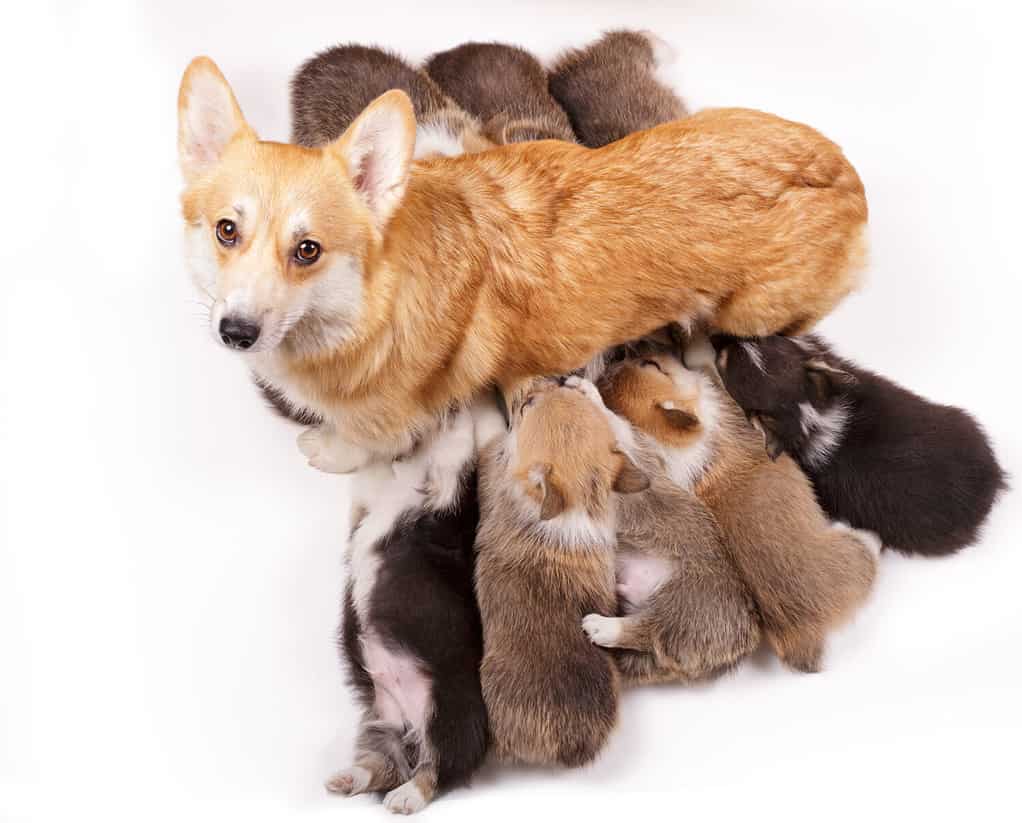
The Cardigan Welsh Corgi is known to grow slightly larger than the Pembroke Welsh Corgi.
©Natalia Fedosova/Shutterstock.com
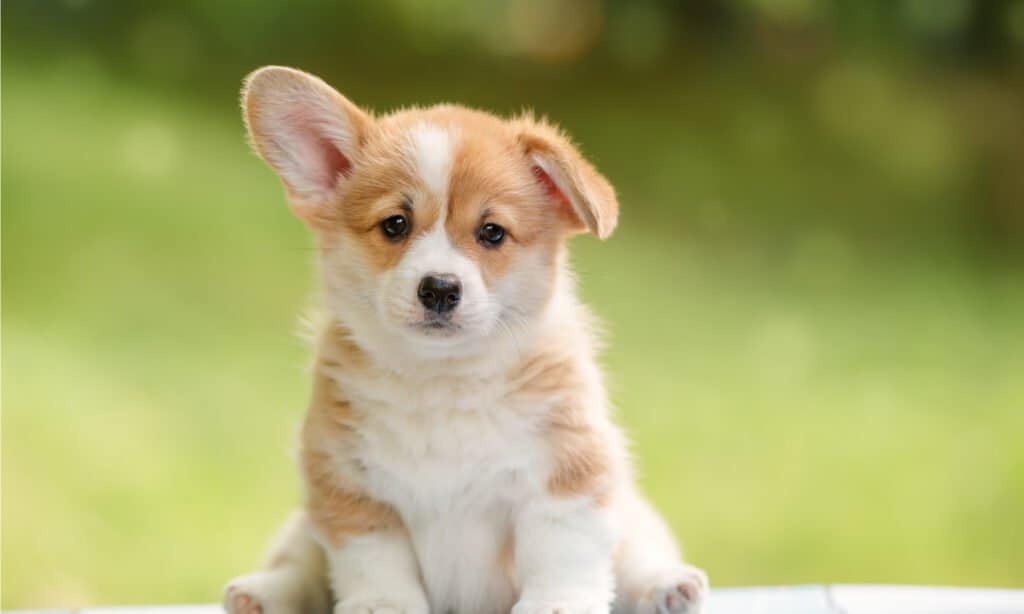
Corgi puppies are known to be incredibly spunky and playful.
©Natalia Fedosova/Shutterstock.com
Pictures of The Corgi At 3-6 Months
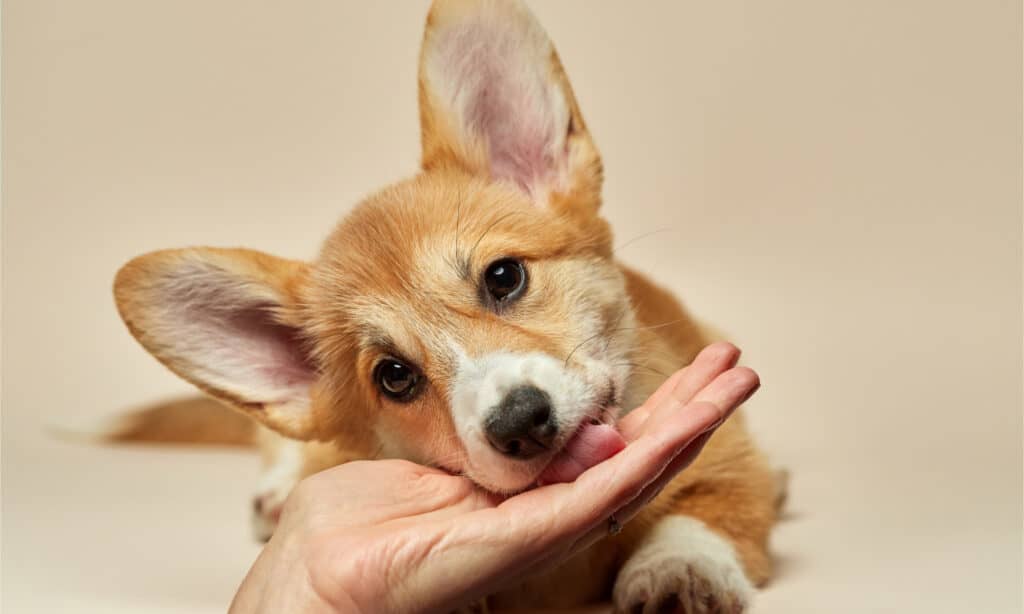
It’s important to begin training your Corgi puppy from the moment they enter your home.
©BONDART PHOTOGRAPHY/Shutterstock.com
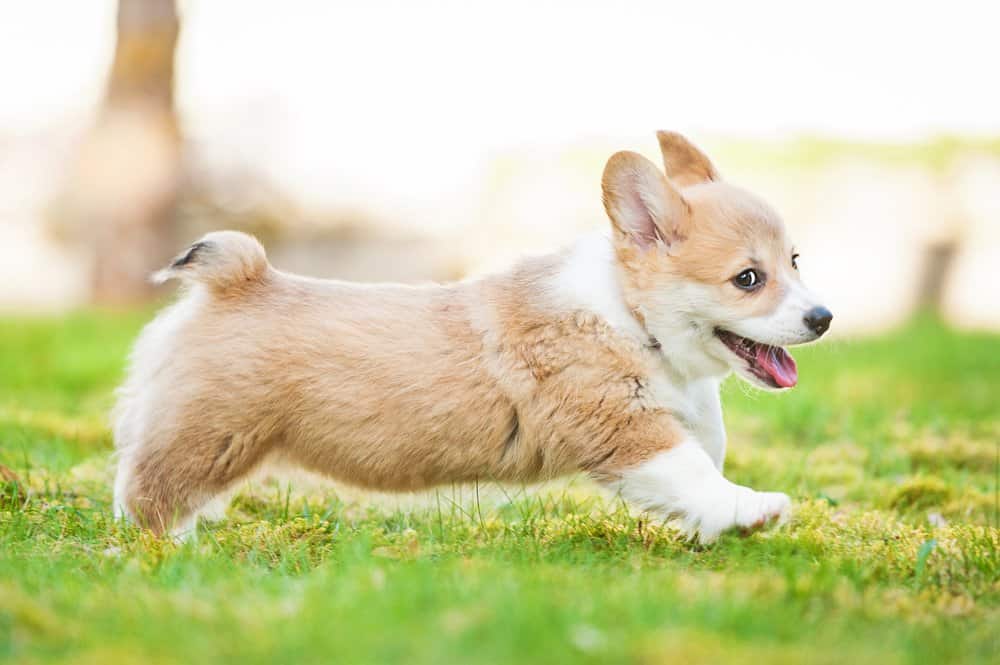
Corgis were originally bred to herd livestock, so they may attempt to herd their owners by nipping ankles!
©Rita_Kochmarjova/Shutterstock.com
Pictures of Fully Grown Corgis
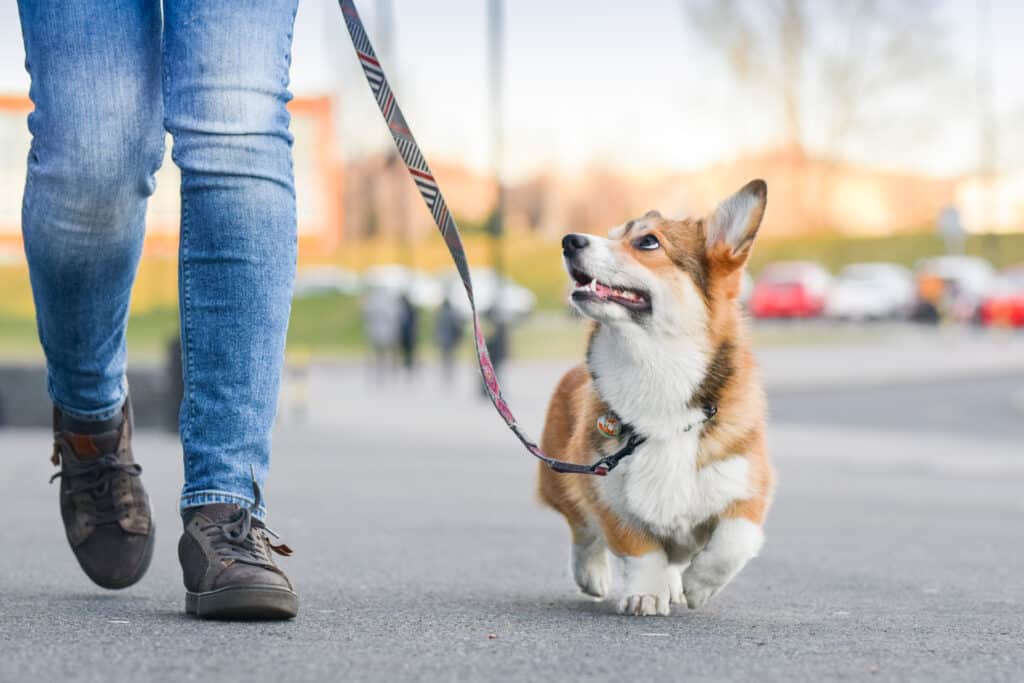
Corgis love to spend quality time with their family.
©Jus_Ol/Shutterstock.com

According to Welsh folklore, Corgis were gifted to families by fairies.
©iStock.com/Ирина Мещерякова
The photo featured at the top of this post is © iStock.com/gorodisskij
Ready to discover the top 10 cutest dog breeds in the entire world?
How about the fastest dogs, the largest dogs and those that are -- quite frankly -- just the kindest dogs on the planet? Each day, AZ Animals sends out lists just like this to our thousands of email subscribers. And the best part? It's FREE. Join today by entering your email below.
Thank you for reading! Have some feedback for us? Contact the AZ Animals editorial team.







